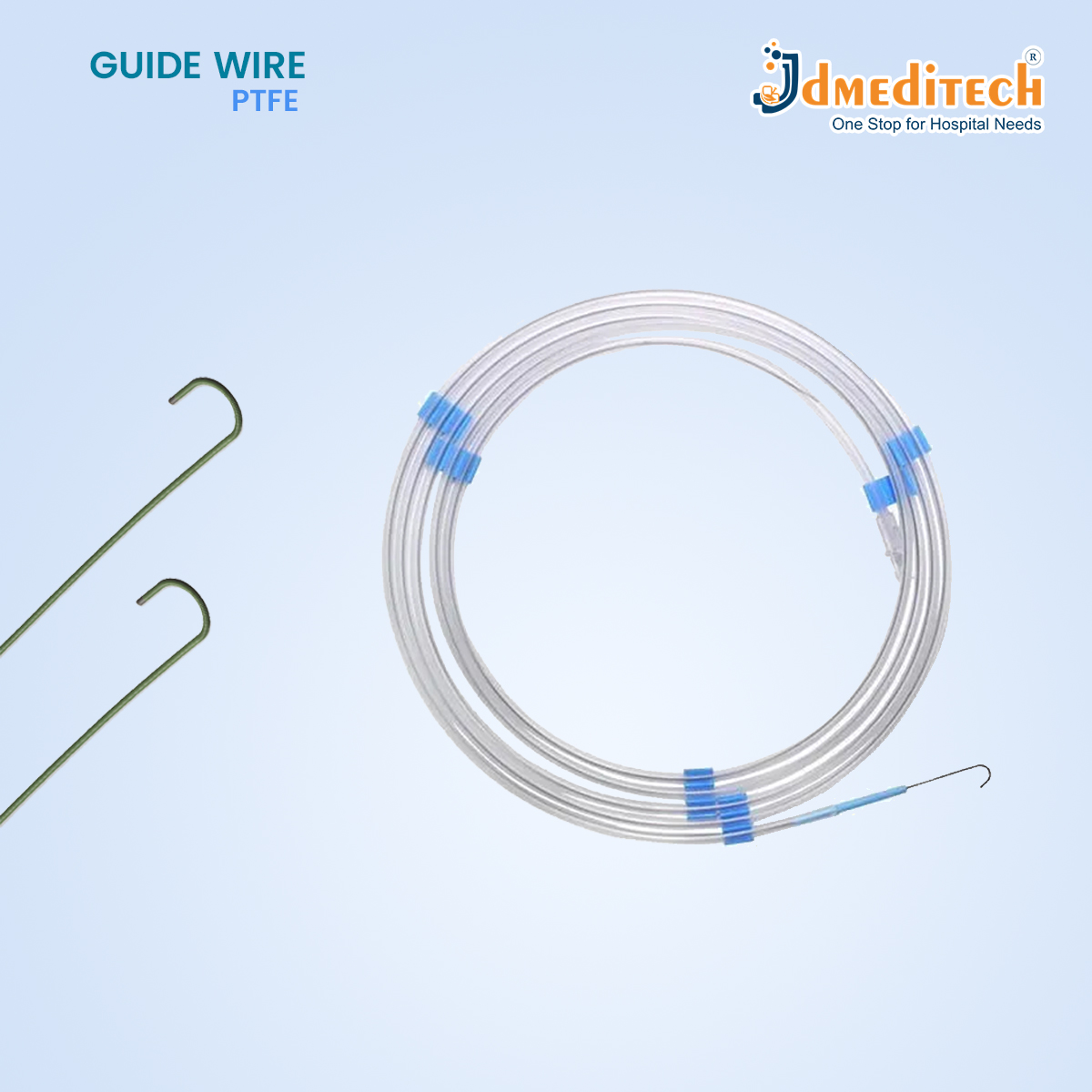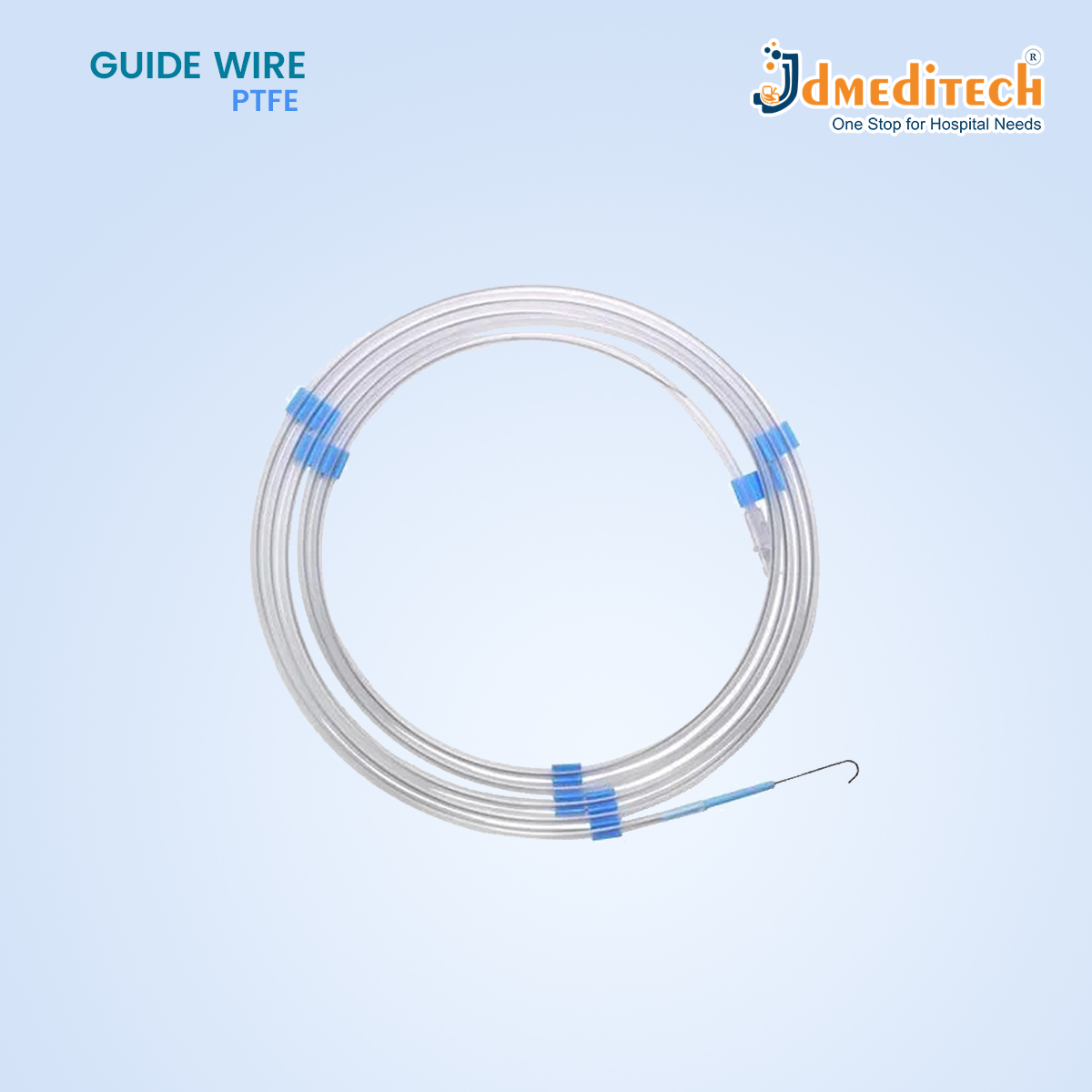




JDmeditech is a manufacturing and exporting company, certified to the International Quality Standard, based in Ahmedabad, Gujarat, India, for all types of guidewires for urology surgery. including PTFE guide wire and this flexible medical wire coated with Polytetrafluoroethylene (PTFE)—commonly known as Teflon. It is used to guide catheters, stents, or other medical devices safely through blood vessels, urinary tracts, or body ducts during minimally invasive procedures such as angioplasty, catheterization, or urological surgeries.
Key Features of PTFE Guide Wire:
PTFE Coating (Teflon) – Offers a smooth, slippery surface for low-friction navigation.
Flexibility – Allows safe movement through curved or delicate anatomy.
Strength and Torque Control – Provides enough stiffness for control while resisting kinks or bends.
Radiopacity – Many are visible under X-ray or fluoroscopy for accurate placement.
Non-reactive Material – PTFE is biocompatible and non-toxic, reducing risk of irritation.
Hydrophobic – Resists sticking to moist tissues, reducing trauma during insertion.
Common Medical Uses:
Cardiology: To guide catheters during angioplasty or stent placement.
Urology: For ureteral stent placement, nephrostomy access, or stone retrieval.
Interventional Radiology: To access blood vessels or ducts for drainage or biopsy.
Types of PTFE Guide Wires:
Straight tip or angled tip – depending on the anatomy and required direction.
Standard or hydrophilic-coated – some include extra coatings for even smoother navigation.